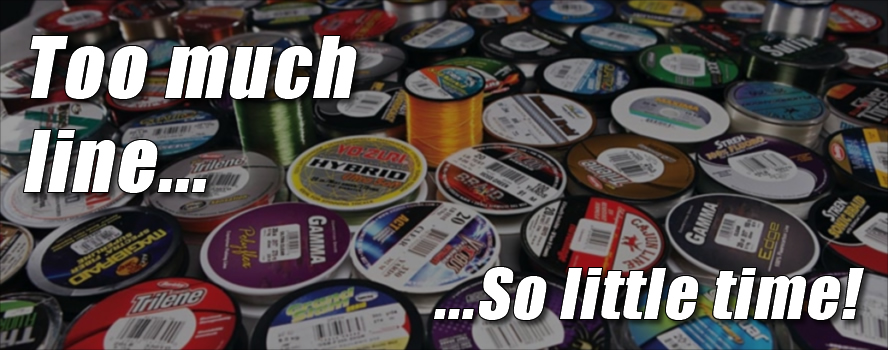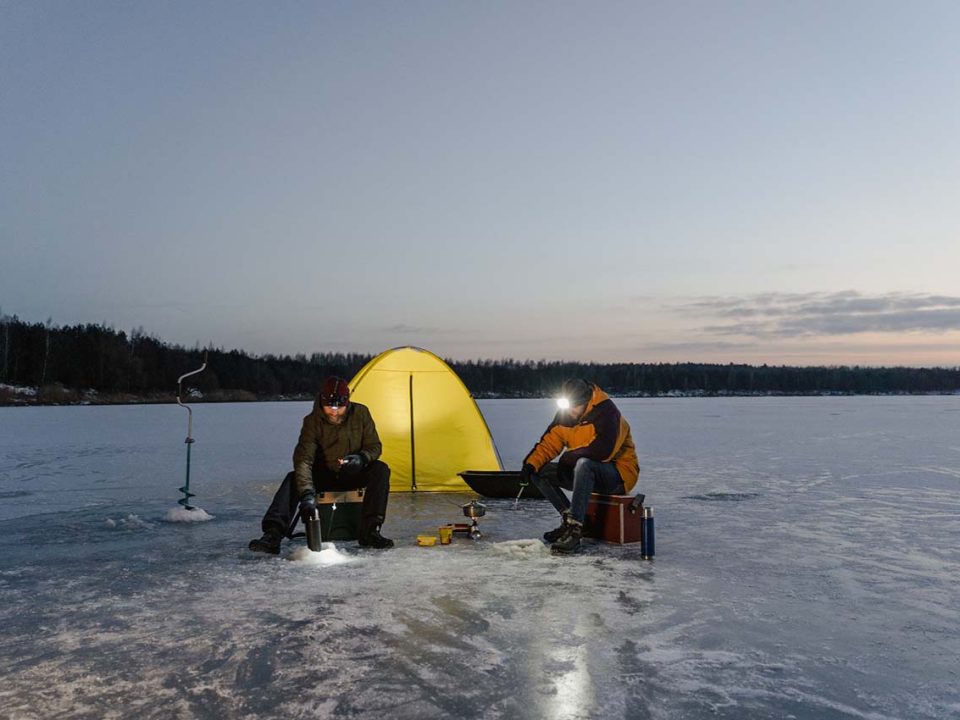
Fishing Line Guide for the Beginner
First we have narrowed the field down to the top three line types and a few key brands:
| Monofilament | Fluorocarbon | Braided Line |
Berkley Trilene XT | Sunline FC Sniper (Under 10 lb test) | Suffix Performance Braid (Green) |
 |  |  |
Berkley 100% Fluorocarbon (Over 10 lb test) | Daiwa Samurai Braid | |
 |  |
Next we’ll explain the key features of each line type:
Monofilament |
|
Fluorocarbon |
|
Braided Line |
|
Here are some examples when and why you might choose one over another in certain scenarios:
Monofilament |
| Generally speaking, monofilament fishing line works “FINE” for all fishing applications. Anglers have been catching bass on monofilament line for over 50 years. So, if you are on a budget and do not want to get caught up in the subtleties that surround this topic, just start with monofilament. Anyone who tells you otherwise is just trying to sell you something more expensive! Scenario You want your lure to ride a bit higher in the water column. Scenario You’re fishing around heavy rocks and wood. Scenario While fishing with a fast moving lure like a crankbait or buzz bait you notice that the bass are not taking the lure completely into their mouth. |
Fluorocarbon |
| In general fluorocarbon line will produce more strikes than any of the other lines because it is nearly invisible underwater. If you plan to fish in bass tournaments, or just want to maximize your catch ratio, fluorocarbon is simply the best choice. Keep in mind that just like all good things, it comes with a higher price tag. Scenario You want to keep your lure a bit deeper in the water column, but visibility is a factor. Scenario Finesse fishing with smaller lures. Scenario Fishing in clear water and the bass are line shy (turning away from your lure when they get close). |
Braided Line |
| One general thing to keep in mind about braided line is that you can always add a fluorocarbon leader (small section of line before the lure) if line visibility is a problem and get the best of both worlds. The only downside is that if you break off where the leader and braid come together, it can take a bit longer to re-tie. Scenario You are fishing deep water and need to get your lure down and keep it there (visibility is not a factor).
Scenario You are fishing in thick in thick weeds. Scenario Fishing a frog lure over matted vegetation, lily pads, etc. and making long casts. Scenario Making long casts at schooling bass in open water with a topwater, soft plastic jerkbait, etc. |
More info on fishing lines:
Monofilament Background:
“Monofilament fishing line (shortened to just monofilament) is fishing line made from a single fiber of plastic. Most fishing lines are now monofilament because monofilament is available in a variety of diameters, each of which provides a different tensile strength (called “test” after the process of tensile testing), and because monofilament fibers cost little to produce. Monofilament line is commercially available in a variety of colors such as clear, white, green, blue, and fluorescent.
Monofilament is made by melting and mixing polymers and then extruding the mixture through tiny holes, forming strands of line, which is then spun into spools of various thicknesses. The extrusion process controls not only the thickness of the line but its test as well.
Monofilament fishing line is used in a huge variety of fishing applications.
Monofilament is not advisable for deepwater fishing since it can absorb water resulting in loose knots, and its sensitivity can decrease when it is wet. Monofilament degrades with time and can weaken when exposed to heat and sunlight. When stored on a spool for a long time, it may come off the fishing reel in coils or loops. It is advisable to change monofilament line at regular intervals to prevent degradation”
Fluorocarbon Background:
Fluorocarbon is actually called “Polyvinylidene fluoride”, or PVDF and is a highly non-reactive and pure thermoplastic fluoropolymer.
PVDF is a specialty plastic material in the fluoropolymer family; it is used generally in applications requiring the highest purity, strength, and resistance to solvents, acids, bases and heat and low smoke generation during a fire event. Compared to other fluoropolymers, it has an easier melt process because of its relatively low melting point of around 177 °C.
It has a low density (1.78) and low cost compared to the other fluoropolymers. It is available as piping products, sheet, tubing, films, plate and an insulator for premium wire. It can be injected, molded or welded and is commonly used in the chemical, semiconductor, medical and defense industries, as well as in lithium ion batteries. It is also available as a crosslinked closed cell foam, used increasingly in aviation and aerospace applications.
A fine powder grade, KYNAR 500 PVDF or HYLAR 5000 PVDF, is also used as the principal ingredient of high-end paints for metals. These PVDF paints have extremely good gloss and color retention, and they are in use on many prominent buildings around the world, e.g. the Petronas Towers in Malaysia and Taipei 101 in Taiwan, as well as on commercial and residential metal roofing.
PVDF membranes are used for western blots for immobilization of proteins, due to its non-specific affinity for amino acids.
Braided Line Background:
“Braided line was one of the of earliest types of fishing line, and in its modern incarnations it is still very popular in some situations because of its high knot strength, lack of stretch, and great overall power in relation to its diameter. Braids were originally made from natural fibers such as cotton and linen, but natural fiber braids (with the very rare exception of braided silk) have long since been replaced by braided or woven fibers of a man-made materials like Dacron, Spectra or micro-dyneema into a strand of line. Braided fishing lines tend to have good resistance to abrasion. Their actual breaking strength will commonly well exceed their pound-test rating.
One drawback of braided lines is that they are generally opaque in the water, and thus visible to fish. Hence, it is common to attach a monofilament at the end of the braided fishing line to serve as a leader and to reduce the high visibility of the braided fishing line.[1]
Braided lines, particularly the newer synthetics, can be successfully used on any type of fishing reel, but are perhaps most well known as excellent lines for bait casting reels, in particular for trolling where they remain especially popular among many fishermen.”




